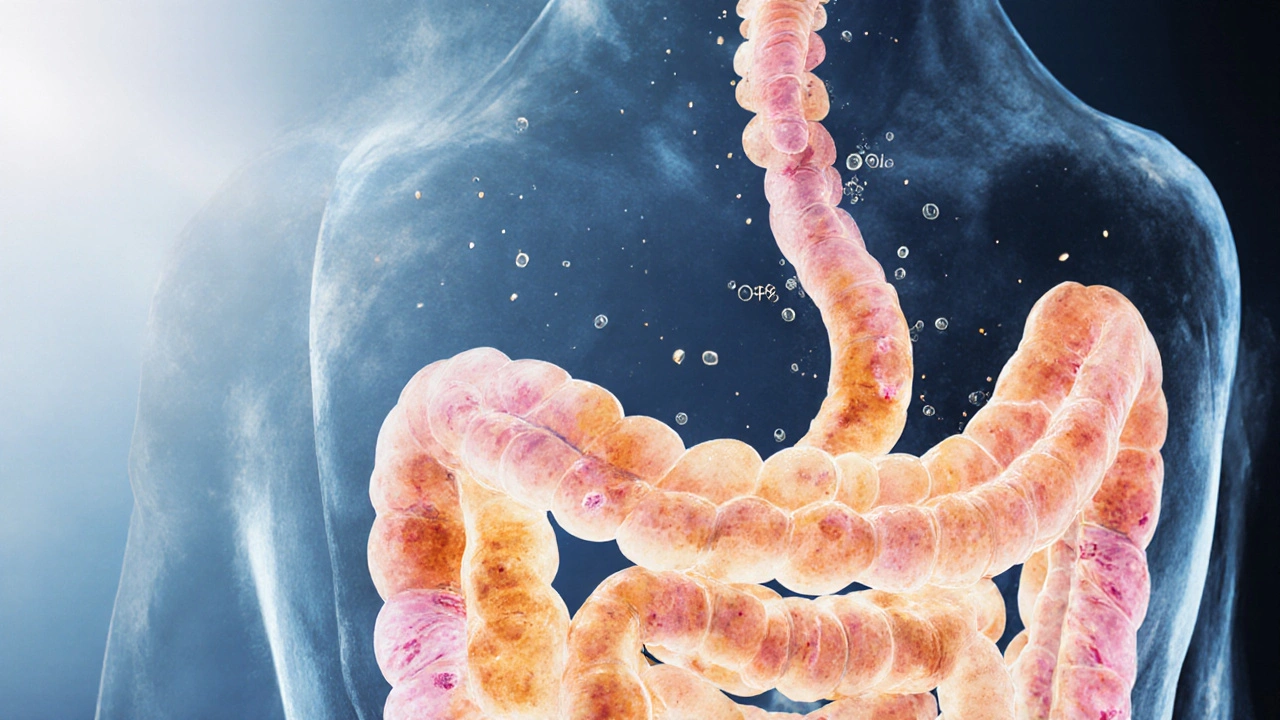Skin Manifestations IBD: A Practical Overview
When dealing with skin manifestations IBD, cutaneous signs that appear in people with inflammatory bowel disease. Also known as IBD skin symptoms, it signals that the gut inflammation is reaching the skin.
These skin clues belong to a broader group called Inflammatory Bowel Disease, a chronic condition that includes Crohn's disease and ulcerative colitis. Within that umbrella, Erythema Nodosum, tender red nodules usually on the shins and Pyoderma Gangrenosum, painful ulcers that can appear on the legs or abdomen are the two most recognized skin expressions. The skin therefore becomes a window into the gut, and spotting these patterns can speed up diagnosis and treatment.
Why skin clues matter in IBD
Extraintestinal symptoms like skin manifestations IBD often show up before intestinal complaints. A teenager with painless red bumps on the lower legs may actually be harboring early Crohn's disease, while a middle‑aged adult with a rapidly expanding ulcer might be experiencing a flare of ulcerative colitis. Recognizing the link lets clinicians order the right labs, arrange endoscopy, and start therapy before complications arise. In practice, dermatologists and gastroenterologists frequently collaborate, sharing biopsy results and treatment plans to address both gut and skin at once.
From a patient’s perspective, the skin is easier to monitor than the bowel. Simple self‑checks—looking for new nodules, checking for ulcer size, noting tenderness—can alert a person to a possible flare. Education programs now teach patients to track these signs alongside stool frequency and abdominal pain. This proactive approach reduces emergency visits and improves quality of life.
Management of skin manifestations usually mirrors the treatment of the underlying IBD. Systemic steroids, biologic agents like anti‑TNF drugs, and immunomodulators can calm both gut inflammation and skin lesions. Topical therapies—high‑potency corticosteroid creams for erythema nodosum or wound‑care dressings for pyoderma gangrenosum—provide added comfort while the systemic meds take effect. Nutritional support, smoking cessation, and stress reduction also play a role because they influence gut permeability and immune response.
While erythema nodosum is often self‑limiting, pyoderma gangrenosum can be aggressive and may require surgical consultation. Early referral to a wound‑care specialist can prevent secondary infection and scarring. In some cases, clinicians use intralesional corticosteroids or systemic colchicine as adjuncts. Monitoring labs for inflammation markers (CRP, ESR) helps gauge how well both gut and skin are responding to therapy.
Understanding the spectrum of extraintestinal manifestations, symptoms that occur outside the digestive tract expands the conversation beyond just skin. Joint pain, eye inflammation, and liver disorders often travel together with cutaneous signs. A comprehensive assessment therefore includes a rheumatologic exam, an eye check‑up, and liver function tests. By treating the patient as a whole, clinicians can reduce the overall disease burden.
Below you’ll find a curated list of articles that dive deeper into specific medications, lifestyle tips, and clinical guidelines related to skin manifestations IBD. Whether you’re a patient looking for practical advice or a healthcare professional seeking up‑to‑date evidence, the resources cover everything from drug comparisons to self‑care strategies.
Colitis and Skin Problems: How They’re Connected
Explore how colitis triggers skin problems, learn the main dermatologic conditions linked to IBD, and get practical tips for diagnosis, treatment, and coordinated care.
